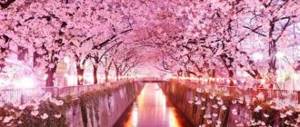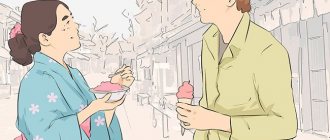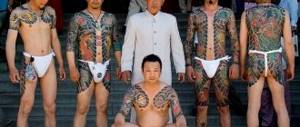Are you planning to go on holiday to Japan in 2021? Great choice! In this review we will tell you everything about the seasons, the weather and where it is better to go and what to see in a given month. We will also find out where the best beach holiday is and what advice tourists give.
Japan is a world of sophisticated exoticism. Jewelry combination of tradition and modernity. A place of harmony of spirit and body. You can pick up many more epithets, but you can understand their meaning only by visiting the Land of the Rising Sun.
Where to look for cheap tickets? The most convenient way to do this is with the help of search engines Aviasales and Skyscanner. To find the best price, check in both and see tickets for different dates.
Climatic features
You can fly to the Far East at any time of the year. The country stretches from north to south, and the weather in Japan is determined by four climatic zones:
- moderately cold (Hokkaido);
- moderately warm (Honshu Island);
- subtropics (Kyushu Island and the north of the Ryukyu archipelago);
- tropics in the southern part of Ryukyu.
On the islands there are clearly distinguished 4 seasons and 2 rainy periods.
The island of Hokkaido is considered the pole of cold. In winter, snowstorms rage here, cold Siberian winds blow, heavy snowfalls cover the mountains with two-meter snowdrifts. The lowest temperature recorded was 41° below zero. But such cataclysms happen rarely. Typically, winter cold stays at 8.5° below zero. It is much warmer on the island of Honshu. Snow falls here too, but it melts quickly.
Cold air masses are replaced by a series of cyclones and anticyclones. After the rains, clear weather sets in. Sakura begins to bloom from the beginning of March . Next the plum blossoms, followed by azalea and wisteria, and for a whole month crowds of tourists contemplate the colorful blossoms, which begin in the south of the country and gradually reach the northern regions. But sooner or later the flowers fall off and the weather deteriorates.
The rainy season in Japan starts from the southern shores, gradually moving north, without affecting the island of Hokkaido. The wet period begins with a light drizzle and ends with water squalls, hours-long downpours with landslides. Meanwhile, hot winds from the tropical Pacific bring heat and high humidity. The temperature in some places rises to 38-40°. The rains are receding, but high humidity makes traveling around the country uncomfortable. The exception is hiking in the mountains, where it is a little cooler.
At the beginning of autumn, the country is again in a fever; the season of typhoons and hurricanes is approaching. And only in October does nature calm down and, as compensation, gives the Momiji season - a period when lush greenery gives way to bright crimson. If you missed the cherry blossoms, come admire the red and yellow maples.
© trevor_dobson_inefekt69 / flickr.com / CC BY 2.0
Where to go
Winter landscapes in Japan are rather boring: wet snow melts quickly, turning into slush, the trees are bare, and it gets dark early. But you can go to the ski resorts of Hokkaido and spend several unforgettable days here.
If you're on Honshu in April or May, when Japan's wisteria blooms, visit Ashikaga Flower Park and walk through the Tunnel of Love. Blooming vines can be compared to a fairy-tale waterfall, and delicate purple inflorescences look like butterflies.
Kyushu Island and the southern tip of Honshu are located in the subtropical zone. There is practically no winter here; summer is hot and very humid. It is better to go here in the cool autumn. The heat is subsiding, beach holidays are in full swing, the season continues until November. You can go on excursions to ancient temples and monasteries.
To the south, on the Ryukyu Island, the tropical zone begins. It's summer here all year round, but the heat is moderated by the fresh sea breeze, and tourists from all over the country come to relax on the beaches of Okinawa.
The rainy season, which begins its journey from the southern shores in May and comes to the north in June, can ruin your vacation. It lasts about two months. Even when there is no precipitation, the sky is covered with low, gloomy clouds. But hydrangea is blooming, trips to hot springs and tours to the most beautiful places in the country are organized. Prices are falling, the flow of tourists is drying up, excursions are becoming cheaper.
To decide when is the best time to go to Japan, consider the weather at different times of the year by month.
© Hetarllen_Mumriken / flickr.com / CC BY 2.0
Festive winter
As such, there is no clear high season in the Land of the Rising Sun; you can relax here at any time of the year. In winter, Japan, especially in major tourist cities, experiences an increased influx of tourists. The reason is the New Year holidays, which the Japanese themselves love to celebrate when traveling around their country. Winter may be the best time to travel to Japan in 2021 if you're willing to expect the prices to be a bit steep.
Also, do not forget that some shops, restaurants and bars may be closed on New Year's holidays. In winter, we definitely recommend visiting the island of Hokkaido and its ski resorts. The fairly mild winter climate is accompanied by plenty of snow and excellent infrastructure.
The magic of spring
Most tourists come to Japan in the spring, when the cherry blossom season begins. On the island of Okinawa, spring arrives in January, gradually moving north. When sakura blooms, there is an influx of tourists in Japan. If you don't pay attention to the crowds and high prices, spring in Japan is the best holiday season. Competition comes in the fall, when the foliage turns yellow and purple and maples begin to bloom.
In March, prices for air tickets, hotels, and excursions jump. But this does not frighten tourists who have traveled vast distances to see the cherry blossoms with their own eyes. Warm, clear weather sets in. And only on the coast of the Sea of Okhotsk the cold wind brings thick fog and frost. The air temperature in Tokyo is 14°, in Ryukyu and Okinawa – 21°.
In April, spring comes to Kyoto and Tokyo. The thermometer in the capital rises to 17°, in the southern resorts to 22°. The weather is sunny, cherries, plums, and apricots are blooming in parks and gardens. Throughout the country there is a Hanami holiday - admiring flowers. Other festivals in Japan will also start in the spring. These are temple festivals, a national dance competition in Tokyo. At the end of the month, Golden Week opens, when a series of significant dates :
- Seva Day – April 29;
- Constitution Day – May 3;
- Green Day – May 4;
- Children's Day – May 5th.
The Japanese move around the country en masse, merging with the flow of tourists. As a result, there is a shortage of hotel rooms, expensive tickets, and traffic jams.
But the weather in May is comfortable for traveling around the country: in Tokyo 20-22°, in the northern districts an average of 17°. On the Ryukyu Islands and Okinawa, the holiday season is in full swing, with temperatures rising to 30°. The rains begin only in the last ten days of May.
© 453277 / pxhere.com / CC BY 2.0
Fauna of the country
The fire-bellied newt, the Iriomotean cat, the Japanese serow, and the flying fox are all rare representatives of the fauna of the Japanese state.
There are many living symbols in the country. The most revered animals are the raccoon dog, deer, cat, and tiger. Storks, pheasants and turtles also fall into the category of revered animals.
There are many birds of different sizes in the forests of the state. Blackbirds, jays, and nightingales build their nests on the slopes of the Japanese mountains. Eagles, hawks and owls tirelessly search the plains and plateaus for their prey.
Tuna, herring, flounder, and cod swim in lakes, rivers and on the coast of Japan. Local fishermen often catch crabs, as well as shrimp and oysters, from the water.
The major predators of the Japanese fauna are wolves, black bears and foxes. Japanese macaques and other monkeys make up the country's motley crew of tropical animals.
The state's topography, 60% covered with forest, makes Japan a unique place where any zone can become a nature reserve. There are countless parks, gardens and protected areas in the country. This is how the Japanese show their respect for nature and try to live in harmony with it.
Hot Summer
In June, the country is flooded with rain, and the air warms up to 30°. Very stuffy, damp and cloudy. Fleeing from natural disasters, tourists flock to Hokkaido, where May is still raging, irises and lotuses are blooming.
In July, the plum rains begin to subside, but the sweltering heat combined with high humidity are not the best conditions for travel. But for this period the cheapest tickets are sold. From July 1 to August 27, climbing the sacred Mount Fuji is officially permitted.
In August, the heat subsides slightly, but high humidity remains. Try to get to the island of Honshu by August 8, when the fireworks festival in Japan attracts hundreds of thousands of tourists, and the sky over Lake Biwa lights up with fiery colors and fancy hieroglyphs.
The Buddhist festival of Obon is celebrated in the middle of the month . The Japanese remember the souls of their departed ancestors. People are being released from work so they can visit their homes. Tourists need to be prepared for crowds of people, queues, and lack of room in hotels.
© oadtz / pixabay.com / CC BY 2.0
Summer rainy seasons
But summer in this wonderful country is often accompanied by heavy rains. The rainy season does not occur only in northern Hokkaido; the rest of the islands of the archipelago experience heavy rains in the summer, accompanied by maximum humidity.
Summer is suitable for those who are looking for cheaper options and are not afraid of high humidity. Rain and cloudy weather will not prevent you from getting acquainted with the amazing culture, history of the country, and visiting its sights.
Such a different autumn
In September, hurricanes and typhoons come along with the long-awaited coolness. Although during the day the temperature sometimes rises to 30°, at night it is cold – up to 10°. Chrysanthemums are blooming, and on this occasion the Japanese are organizing another flower festival.
In October, the weather is calm and cool, and nature delights with its bright colors. Maple season in Japan is the best time to travel around the country. In Tokyo during the day it is 20-22°, in Okinawa 27°.
In November, golden autumn descends on the country. The air is clear and clean, there are frosts in the mornings, but the chrysanthemums have not yet bloomed. In the capital up to 16°, in the southern city of Naha up to 25°. There are few tourists, prices are reasonable.
© 618474 / pxhere.com / CC BY 2.0
Helpful advice
Save on housing by renting an apartment from a local on Airbnb. Get 2100 rub. as a gift for your first booking.
My ticket purchasing plan
- I start monitoring prices in advance - usually through the low price calendar skyscanner.ru
As I wrote above, I bought air tickets to Tokyo six months before the trip, and started monitoring prices even earlier.
For my flight, I considered the following airlines: Aeroflot (connection in Moscow about 10 hours, 35,000 rubles), Turkish Airlines (connection in Istanbul about 8, flight 4 hours + 12 hours, 32,000-35,000 rubles), Finnair (connection in Helsinki 10 hours, 32,000 rubles).
- When I find a more or less suitable option (in terms of price and connections), I compare prices on: skyscanner.ru, aviasales.ru, the airline’s website
In the end, I settled on Finnair, but bought through OneTwoTrips, because... on the airline’s website, the same tickets cost not 32,000, but 52,000 rubles. So I saved 20,000 rubles on each ticket.
- I read reviews about the agent through whom I will buy
There were tickets a little cheaper (500 rubles), but I didn’t like the reviews about the agent
- I book and pay for tickets.
Some time after payment, I checked the tickets on the airline’s official website using the reservation number, there are tickets in the system. This is good. All that remains is to print out the tickets and attach them to the visa application package.
Winter's Tale
The average winter temperature ranges from 1° to 14° depending on the region.
In December, the country prepares for the New Year holidays. It is important for believers to know when Christmas is in Japan and how they celebrate it. To avoid conflicts, local churches received a special blessing, and Orthodox Christians celebrate Christmas together with Catholics on December 25th. For the Japanese who profess Buddhism and Shintoism, this is simply a beautiful, romantic evening with loved ones.
New Year is a favorite holiday in Japan, where modern culture mixes with ancient traditions. Snow lies only in the northern region. Therefore, in January, skiers go to the resorts of Hokkaido.
In February, spring returns to the islands, green grass emerges, buds swell, and Japanese cherry blossoms bloom in the south.
© tater65 / flickr.com / CC BY 2.0
Beach holidays in Japan
Russians do not consider Japan as a country for a beach holiday. To do this, choose resorts that are closer and cheaper. However, the holiday season in the southern archipelagos lasts all year round; the water temperature does not fall below 20°, and in the summer it rises to 27°. Seaside resorts are popular among native Japanese.
The main flow of tourists occurs in July and August. A fresh sea breeze makes it easier to endure heat and high humidity. But prices are high, and budget rooms are sold out long before the start of the season. Therefore, it makes sense to come here in other months.
Japanese economy
Japan is at a post-industrial stage of development, which is characterized by the predominance of the non-productive sector (services, finance).
Japan ranks 1st-2nd in the world in terms of output of many industries. Industry is mainly concentrated along the coasts.
Causes:
1) Scarce reserves - most of the raw materials have to be imported
2) Convenient sea coast, easy to deliver raw materials and export finished products.
Electric power industry
Most of the electricity is produced at thermal power plants.
Mainly imported raw materials (oil, gas) are used.
The development of alternative energy sources is actively underway.
Ferrous metallurgy.
The country ranks first in the world in terms of steel production.
Japan's share in the global ferrous metallurgy market is 23%.
The largest centers, now operating almost entirely on imported raw materials and fuel, are located near Osaka, Tokyo, and Fuji
Non-ferrous metallurgy.
Due to the harmful impact on the environment, primary smelting of non-ferrous metals is being reduced.
Secondary non-ferrous metallurgy is developing (from scrap metal)
There are non-ferrous metallurgy enterprises in almost every major city.
Mechanical engineering.
Mechanical engineering accounts for 40% of Japan's total industry. Japan is a world leader in many branches of mechanical engineering.
Japan ranks first in the world in shipbuilding and specializes in the construction of large-tonnage tankers and dry cargo ships. The main centers of shipbuilding and ship repair are located in the largest ports (Yokogana, Nagosaki, Kobe).
Japan also ranks first in the world in car production. The main centers are Toyota, Yokohama, Hiroshima.
Chemical industry
Japan ranks one of the first in the world in terms of development of the chemical industry.
Japan has developed pulp and paper, light and food industries.
Transport Japan
All types of transport are developed in Japan with the exception of river and pipeline transport. In terms of cargo transportation volume, the first place belongs to road transport (60%), the second place goes to sea transport.
The territorial structure of the economy combines two different parts: the Pacific belt, which is the socio-economic core of the country, and peripheral zones, where timber harvesting, livestock farming, mining, hydropower and tourism are most developed.










